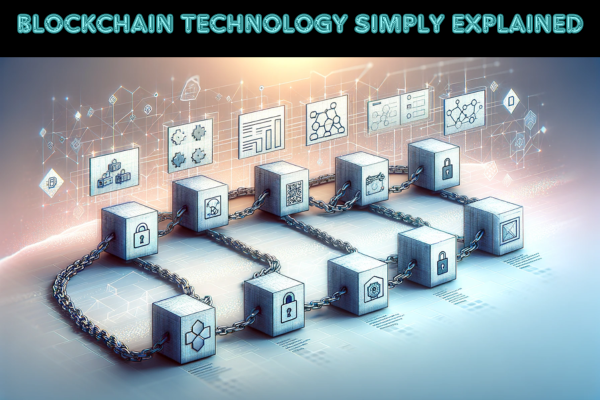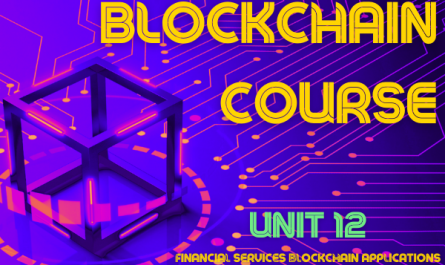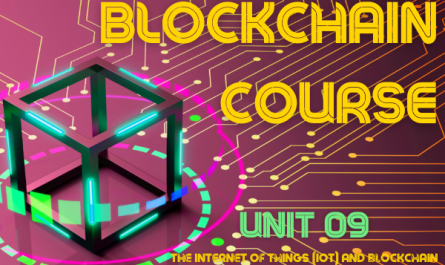In the digital age, where information is power and security is paramount, a revolutionary technology has emerged to redefine our perception and management of data: blockchain. This groundbreaking innovation extends beyond being just the backbone of cryptocurrencies. In this article, we will demystify this complex technology, breaking it down into simple and understandable terms. Whether you are a tech enthusiast, a curious beginner, or a forward-thinking entrepreneur, this article will provide you with a clear understanding of blockchain technology, its purpose, capabilities, workings, types, and its promising future.
Table of Contents
What is a Blockchain?
Imagine you’re playing a game of telephone, where a message is passed from one person to another and, by the end of the line, the original message often gets distorted. Now imagine if there was a way to ensure that the message remains the same, no matter how many people it passed through. That’s the essence of blockchain.
The Decentralized Digital Ledger
A blockchain is like a digital ledger shared among a group of people. Everyone in the group can write entries in this ledger, but once an entry is made, it can’t be changed or erased; it stays there for everyone to see forever. This ledger is not stored in one place but is distributed across many computers around the world, making it decentralized.
Everyday Use Examples
In the world of technology, this “book club” could be anything, from a group of people making financial transactions, like Bitcoin, to a network of computers sharing data. In simple terms, a blockchain is a transparent, immutable, decentralized digital ledger that records transactions across multiple computers. It’s a way to ensure trust, accountability, and security in a world where these qualities are more important than ever.
Main Purpose of Blockchain
The main purpose of a blockchain is to enable secure, transparent, and tamper-proof transactions in a decentralized manner. It’s about creating trust in a trustless environment. Let’s break this down a bit:
- Security: In a blockchain, each transaction is encrypted and linked to the previous one.
- Transparency: Every transaction on the blockchain is visible to all participants in the network.
- Decentralization: Unlike traditional databases controlled by a single entity like a bank or a government, a blockchain is distributed across multiple nodes or computers.

Real Applications of Blockchain
Blockchain technology, often associated with cryptocurrencies, has a wide range of applications:
- Secure Transactions: Facilitate secure peer-to-peer transactions.
- Supply Chain Transparency: Verify the authenticity of products.
- Digital Identity: Manage digital identities securely.
- Voting: Create secure and transparent voting systems.
- Health Records: Create secure and interoperable health records.
- Copyright Protection: Register and protect intellectual property rights.
- Decentralized Finance (DeFi): Rebuild traditional financial systems in a decentralized manner.
How Does a Blockchain Work?
Understanding how blockchain works can seem complex, but let’s break it down into simple, step-by-step terms:
- Transaction Initiation: A user initiates a transaction.
- Transaction Verification: The network of nodes verifies the transaction.
- Transaction Added to a Block: Once verified, it is grouped into a block.
- Block Added to the Chain: It is assigned a unique identifier and added to the chain.
- Consensus: Nodes must reach a consensus for the block to be valid.
- Completion: Once consensus is reached, the block is added to the chain.
Blockchain Security
Although blockchain technology is designed to be secure and tamper-resistant, it is not completely immune to hacking. However, hacking a blockchain is extremely difficult and requires significant resources.
Types of Blockchains
Blockchain technology has evolved into several types, each with its own characteristics and use cases:
- Public Blockchains: Open to anyone who wishes to participate.
- Private Blockchains: Restricted to specific members.
- Consortium Blockchains: Controlled by a group of organizations.
- Hybrid Blockchains: Combine elements of public and private blockchains.
The future of blockchain appears both promising and provocative. The potential of this technology extends far beyond its current applications and is poised to disrupt traditional systems in ways we may not fully comprehend yet. From a decentralized internet to a token economy and the convergence with artificial intelligence, blockchain promises a more decentralized, transparent, and equitable world. However, it also presents new challenges and controversies. As we navigate this uncharted territory, it is crucial to foster a dialogue about the ethical, legal, and social implications of this revolutionary technology.




